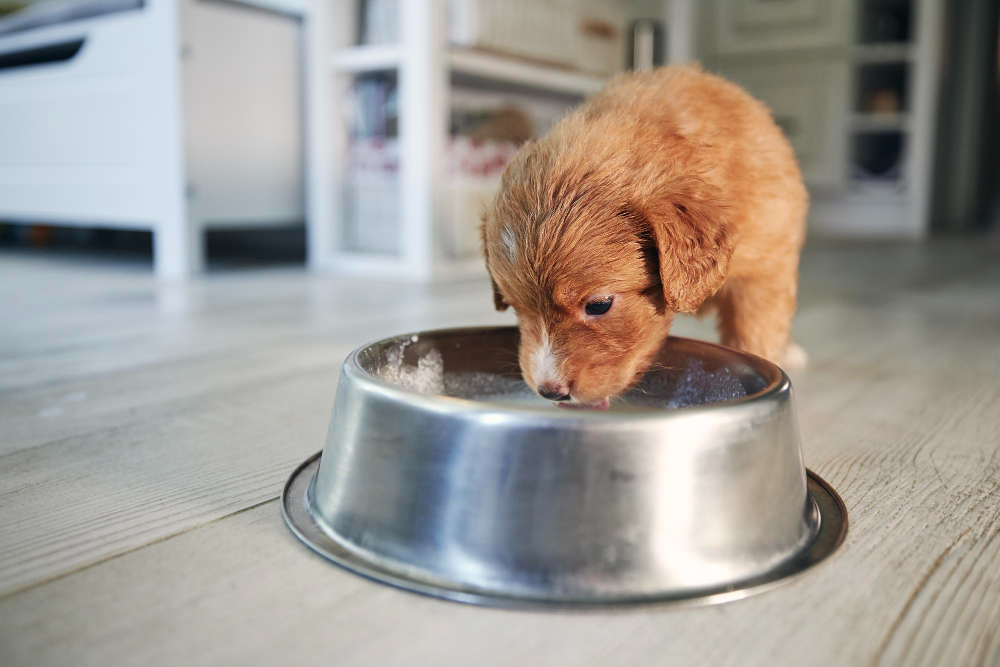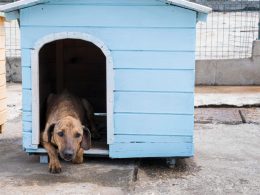Unfortunately, it is widespread to find orphaned puppies and kittens on the streets, either because they lost their mother or because of abandonment by irresponsible Some puppies are lucky enough to find good people willing to help them. However, the good samaritans who end up finding orphans puppies do not know what to do or how to feed them at such a young age since it is not common to have a pet mom at home during lactation, and there is no milk from bitches or cats on the market, right? And that’s why people usually think the best solution is to provide cow’s milk, but it’s not the best option, and you’ll understand why.
Firstly, we must understand that dogs and cats are mammals, just like us. Therefore, they drink milk when they are puppies. You may be thinking at this moment, “but this is obvious. To feed them, we just need to provide milk”, but it is not just any milk we can give them.
The milk has different characteristics according to each species it belongs to. Even the composition of the milk of dogs and cats is different. It happens due to the evolution of the species. Some will have more fat, others more protein, and others more carbohydrates (sugars), depending on the needs of each species. Whales, for example, have milk very rich in fats, because the milk needs to pass through seawater and cannot dilute.
Can I Provide Cow’s Milk For Puppies?
It is a widespread mistake to think that cow’s milk sold in markets can be given to newborn pups, but after all, why can’t it be supplied?
The composition of cow’s milk has an amount of lactose (a type of sugar present in milk in general) much more significant than the milk of bitches and cats. So, give of this type of milk, in most cases, can cause osmotic diarrhea in puppies due to excess lactose. That happens because these puppies cannot digest and absorb all the lactose in the cow’s milk, accumulating in the intestinal colon wall, causing excessive water to remain in the feces, which results in diarrhea.
If We Cannot Provide Cow’s Milk To Newborn Puppies Of Dogs And Cats, What Can We Provide?
Several products are formulated for feeding newborn puppies of dogs and cats, and you can easily find them as substitutes for cow milk in pet stores. This special milk can replace the mother’s milk and have approximately the same properties as “natural” milk. That is, it will have ideal levels of proteins, fats, and carbohydrates, including the different types of each nutrient, in the correct measure that will provide the healthy growth of the puppies.
But these products are usually difficult to find in common markets and more easily found on the internet. So it can take a while to arrive at your address. But you should provide the puppies with the right food and nutrition while you wait for the formulated milk. In these cases, you can make a homemade substitute. For this, you must contact a professional who understands animal nutrition. The professional will see if it is possible to feed the puppies with the ingredients available at home and which quantities to use to reach nutritional levels similar to maternal milk.
What Is The Ideal Supply Quantity?
It is necessary to estimate the age of the orphan puppies’ in days because they will ingest more food as the days go by. But, it is essential to point out that excessive amounts should not be given, as this interferes with their growth and can cause future problems.
If you have purchased a commercial substitute or a prescription from a trained professional, follow the instructions on the package or prescription. Otherwise, you could cause long-term health problems.
How To Know If The Newborn Puppy Is Growing As It Should?
Observe the weight gain over the days to know if the puppy is growing correctly. Dogs generally have a weight gain that varies between 6 to 10% of the daily weight. If the puppy is 100g today, it should weigh between 106g and 110g the next day. For cats, the daily weight increases between 5 and 7%. If the cat weighs 100g today, tomorrow it should weigh between 105g and 107g. Monitor the weight daily until the third week, when the weaning period will begin.
When To Start Weaning?
Weaning can be started when the newborn puppy has reached the age of 21 days or three weeks. The estimated period for the full exchange of food is around eight weeks.
When the pups are with their mothers, they are in charge of weaning by regurgitating small portions of solid food to the puppies, so in the case of orphan puppies, introduce the food in small amounts a day, in the form of porridge.
There is pre-weaning porridge for sale, but you can make it with the type of food you have chosen to give the animal, which can vary between dry food, wet food, or a natural/homemade diet accompanied by a professional. If the cub is a dog and you want more information about the types of food you can provide, go to the article “Food and Feeding.”
Recommendations:
Some observations are essential to assess the puppy’s evolution. Check out:
- Monitoring the puppy’s satiety: note if the puppy is satisfied. If it seems hungry is extremely important to adjust the amount of food provided, so talk to a specialist.
- Set the amount: to set the amount of food provided that promotes satiety, observe the food leftovers. In this way, you can adjust throughout the day.
- Monitoring weight: it is essential that weight monitoring is done daily to monitor the puppy’s growth and adjust the amounts of food provided.
- Observe the stool: observe the stool consistency, smell, and color. The feces should have a firm texture and be slightly moist, not have a strong smell, and the color should be brownish. If you notice any changes, take it to the vet.
- Water: from the moment you start the weaning phase, always have fresh water available.
It is essential to point out that a veterinarian must accompany the newborn puppy. If you notice any problems, whether in growth or lack of hunger, take the puppy to the vet immediately.














